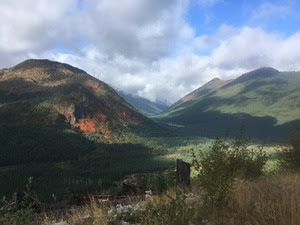[vc_row row_type=”row” use_row_as_full_screen_section=”no” type=”full_width” angled_section=”no” text_align=”left” background_image_as_pattern=”without_pattern” css_animation=””][vc_column width=”1/12″][/vc_column][vc_column width=”5/6″][vc_column_text]In forest collaborative groups, diverse stakeholders including environmental organizations, timber companies, recreational organzations, and other interested members of the community come together to discuss timber sales and other proposed projects with Forest Service staff. Cascade Forest Conservancy is a founding member of, and active participant in, both forest collaboratives in the Gifford Pinchot National Forest. The Pinchot Partners, formed in 2003, focuses on projects in the Cowlitz Valley Ranger District, and the South Gifford Pinchot Collaborative, formed in 2011, focuses on projects in the Mt. Adams Ranger District. Through collaborative participation, our goal is to influence GPNF projects to be sustainable for wildlife, fish, water quality, and local communities.
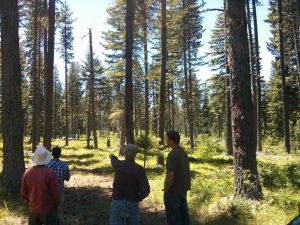 During the warmer months our meetings involve field trips where we can see proposed sale units or projects after they are completed. Seeing how projects look on the ground inspires robust conversations about topics such as riparian habitat, harvest practices, and roads. Last year, the SGPC went on a trip to a temporary road that had been used in a timber sale and obliterated. Seeing this former temporary road led to a discussion about the impacts of temporary roads that is ongoing. The Pinchot Partners visited units for the Iron Crystal timber sale and areas that would be part of huckleberry monitoring efforts. During the huckleberry trip, Pinchot Partners members were able to learn about our huckleberry monitoring process from CFC staff.
During the warmer months our meetings involve field trips where we can see proposed sale units or projects after they are completed. Seeing how projects look on the ground inspires robust conversations about topics such as riparian habitat, harvest practices, and roads. Last year, the SGPC went on a trip to a temporary road that had been used in a timber sale and obliterated. Seeing this former temporary road led to a discussion about the impacts of temporary roads that is ongoing. The Pinchot Partners visited units for the Iron Crystal timber sale and areas that would be part of huckleberry monitoring efforts. During the huckleberry trip, Pinchot Partners members were able to learn about our huckleberry monitoring process from CFC staff.
Another important role of the collaborative groups is to vote on retained receipts funding. This is money generated from selected timber sales that is used to fund restoration activities. Both collaboratives get to vote on our priorities for restoration activities and how much funding should be allocated to these projects. The collaborative groups have chosen to fund high school field work crews, aquatic restoration projects, riparian planting, invasive weed treatments, and many other projects through retained receipts.
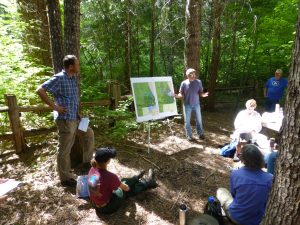 Over the last year in the South Gifford Pinchot Collaborative we have worked on the Upper White Salmon timber sale, formed subcommittees to focus on important topics, and began discussing the Middle Wind timber sale. The Upper White Salmon project was located in drier forest near Mt. Adams. A focus of the collaborative discussion in this project was the harvest prescription for mature forest units with large trees. After several meetings we were able to reach a compromise that considered wildlife habitat, the role of fire on the landscape, and the future climate change impacts. The Middle Wind project is located in a part of the GPNF that has many riparian areas and listed fish habitat. We would like to see this project implemented in a way that improves aquatic habitat and reduces road mileage in the watershed. We have also participated in subcommittee meetings to develop a Zones of Agreement document for the group focused on plantations. The intent of that document is to streamline discussion for topics we agree on, and to educate others about the SGPC.
Over the last year in the South Gifford Pinchot Collaborative we have worked on the Upper White Salmon timber sale, formed subcommittees to focus on important topics, and began discussing the Middle Wind timber sale. The Upper White Salmon project was located in drier forest near Mt. Adams. A focus of the collaborative discussion in this project was the harvest prescription for mature forest units with large trees. After several meetings we were able to reach a compromise that considered wildlife habitat, the role of fire on the landscape, and the future climate change impacts. The Middle Wind project is located in a part of the GPNF that has many riparian areas and listed fish habitat. We would like to see this project implemented in a way that improves aquatic habitat and reduces road mileage in the watershed. We have also participated in subcommittee meetings to develop a Zones of Agreement document for the group focused on plantations. The intent of that document is to streamline discussion for topics we agree on, and to educate others about the SGPC.
This year the Pinchot Partners drafted a response to the Iron Crystal Environmental Analysis and developed a huckleberry restoration strategy in partnership with the Forest Service, CFC, and the Cowlitz Indian Tribe. The Iron Crystal response required several long phone calls and in-person meetings to work through the range of values at play in this project. Many of us shared concerns with the analysis prepared by the Forest Service and met with local Forest Service staff to discuss these issues. We were successfully able to submit a letter before the comment period deadline. In addition to our role as a board member of the Pinchot Partners, CFC also began a new partnership with the collaborative through our huckleberry monitoring. Huckleberry is an important plant to the region culturally, recreationally, and economically, and the Pinchot Partners decide huckleberry restoration should be a priority concern for the organization in the coming years. On February 27-28 the Pinchot Partners held their annual meeting in Packwood, WA. The day and a half meeting is full of great discussions and presentations with Forest Service staff, and this year we visited the White Pass Country Museum and learned about the history of the local communities. Last year, the Pinchot Partners celebrated their 15th anniversary. Over the last fifteen years, our dedication to working together on forest projects has made the partners an example for other collaborative groups throughout the region.
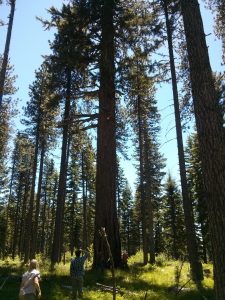 Finding common ground can sometimes be slow, challenging work. It often requires balancing environmental, economic, cultural, and recreational concerns and reconsidering what success means for each of us. Successful collaboration relies on a diverse group of stakeholders, representing a full spectrum of user groups, and bedrock environmental laws. Attempts to weaken environmental laws by Congress present a direct threat to the progress collaboratives have made toward rebuilding trust and developing projects that benefit forests and communities. We are encouraged by the progress these organizations have made since their formation, and we look forward to working on future projects together.
Finding common ground can sometimes be slow, challenging work. It often requires balancing environmental, economic, cultural, and recreational concerns and reconsidering what success means for each of us. Successful collaboration relies on a diverse group of stakeholders, representing a full spectrum of user groups, and bedrock environmental laws. Attempts to weaken environmental laws by Congress present a direct threat to the progress collaboratives have made toward rebuilding trust and developing projects that benefit forests and communities. We are encouraged by the progress these organizations have made since their formation, and we look forward to working on future projects together.
Both collaborative groups meet monthly, and the meetings are open to the public.
To learn more visit:
South Gifford Pinchot Collaborative: http://www.southgpc.org
Pinchot Partners: https://pinchotpartners.org/[/vc_column_text][/vc_column][vc_column width=”1/12″][/vc_column][/vc_row]
Menu


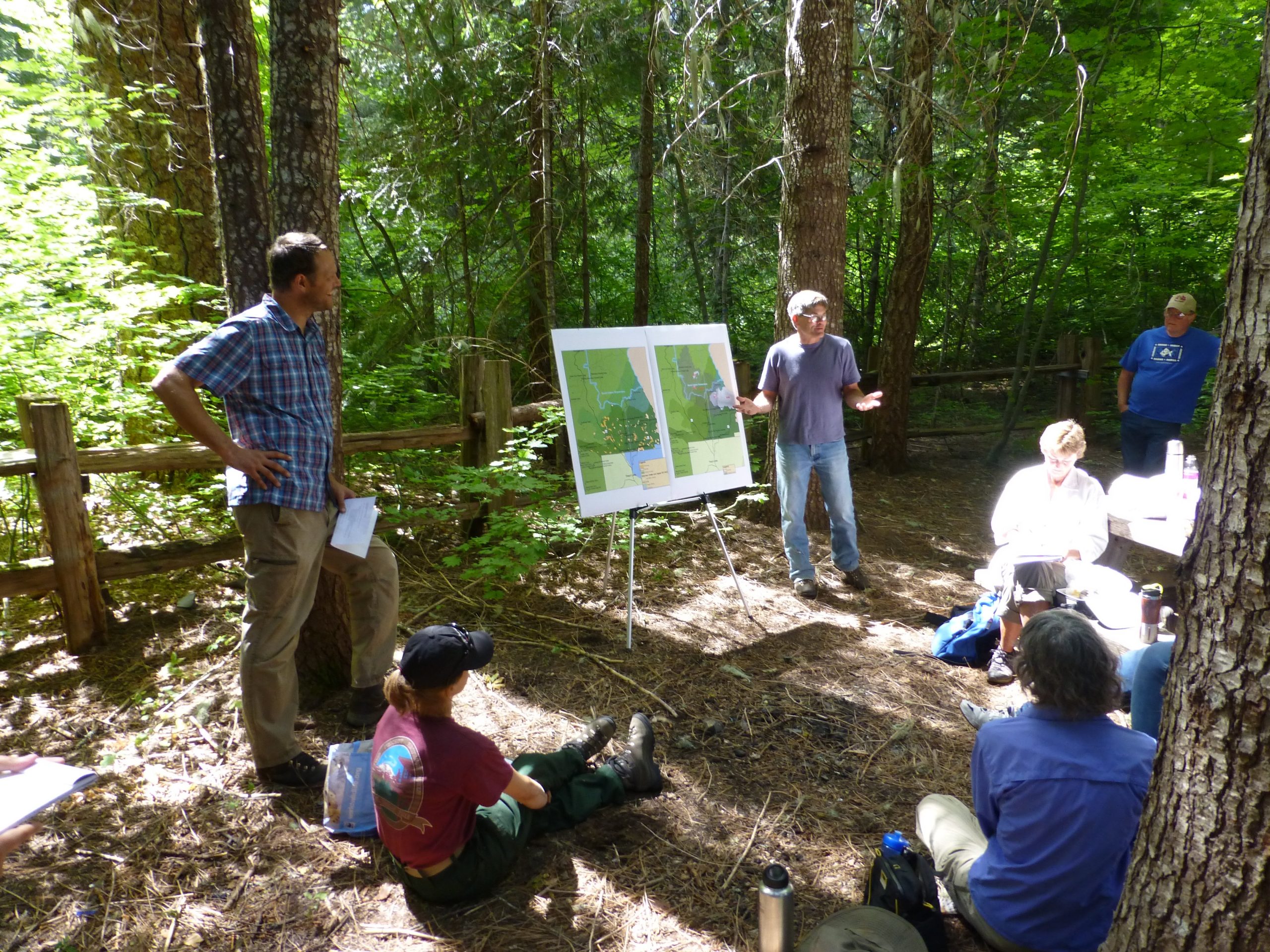

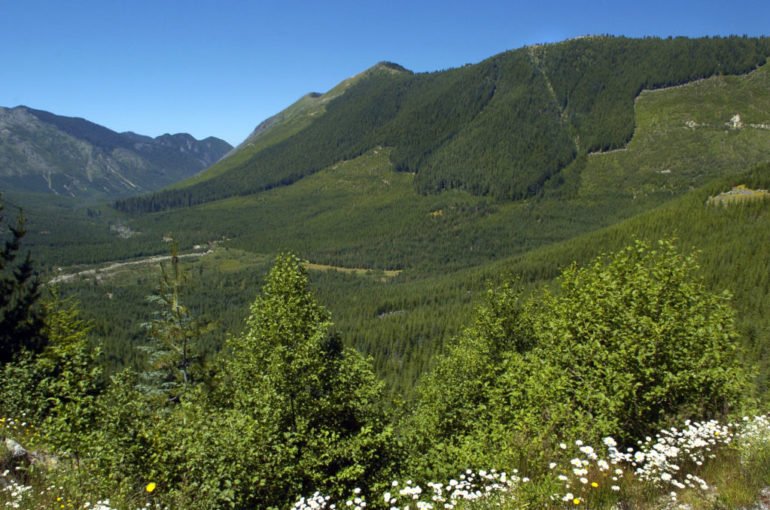
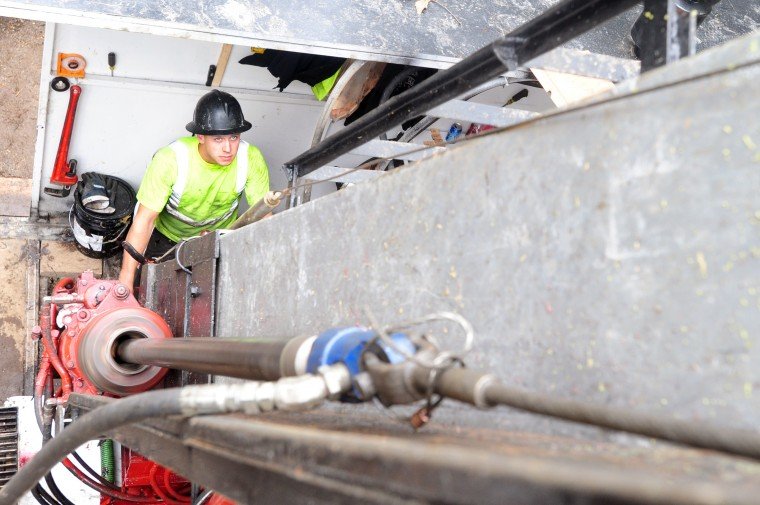
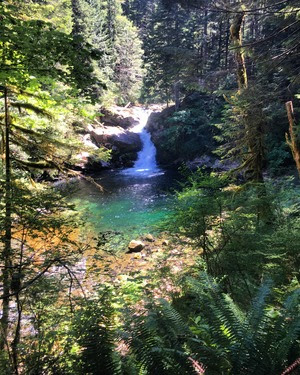
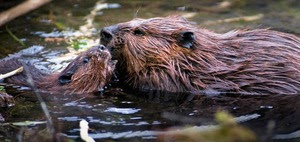 Beavers have a bit of a reputation as being nuisances for landowners. But to us, they are self-adapting ecosystem engineers! For that reason, we are beginning a project with Cowlitz Indian Tribe to reintroduce more beavers into the aquatic ecosystems of Gifford Pinchot National Forest.
Beavers have a bit of a reputation as being nuisances for landowners. But to us, they are self-adapting ecosystem engineers! For that reason, we are beginning a project with Cowlitz Indian Tribe to reintroduce more beavers into the aquatic ecosystems of Gifford Pinchot National Forest.